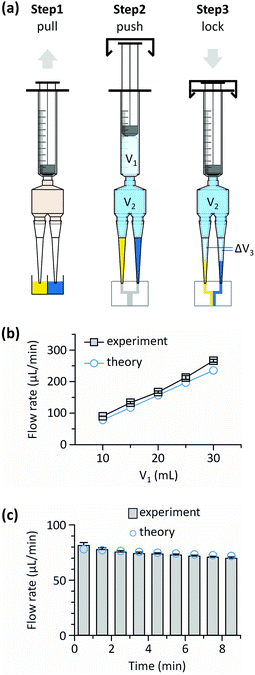 Open Access Article
Open Access ArticleCreative Commons Attribution 3.0 Unported Licence
Correction: A smart multi-pipette for hand-held operation of microfluidic devices
Byeongyeon
Kim
a,
Young Ki
Hahn
b,
Dongwon
You
a,
Sein
Oh
a and
Sungyoung
Choi
*a
aDepartment of Biomedical Engineering, Kyung Hee University, Yongin-si, Gyeonggi-do 446-701, Republic of Korea. E-mail: s.choi@khu.ac.kr
bSamsung Electronics, Seocho-daero, Seocho-gu, Seoul, Republic of Korea
First published on 5th July 2017
Abstract
Correction for ‘A smart multi-pipette for hand-held operation of microfluidic devices’ by Byeongyeon Kim et al., Analyst, 2016, 141, 5753–5758.
In the original manuscript, the expression for the generated pressure drop by the smart pipette, eqn (3) was given incorrectly, as
The correct formula should be as follows:
 | (3) |
To reflect this change, amendments are required to Fig. 1 and the text.
• Fig. 1b and c are affected by the correction needed to the theoretical estimation for the generated pressure by the smart pipette, and the overall corrected version of Fig. 1 is as follows:
• The first sentence on p. 5755 should be amended as follows:
‘If V2 ≫ (ΔV3)t and V1 ≫ (ΔV3)t, the pressure change becomes negligible and thus the smart multi-pipette maintains a constant pressure during device operation.’
• The fourth sentence of the third paragraph on p. 5755 should be amended as follows:
‘We note that the experimental value is higher than the theoretical expectation of 7.8%.’
The changes do not affect any of the conclusions of the article.
The Royal Society of Chemistry apologises for these errors and any consequent inconvenience to authors and readers.
| This journal is © The Royal Society of Chemistry 2017 |


